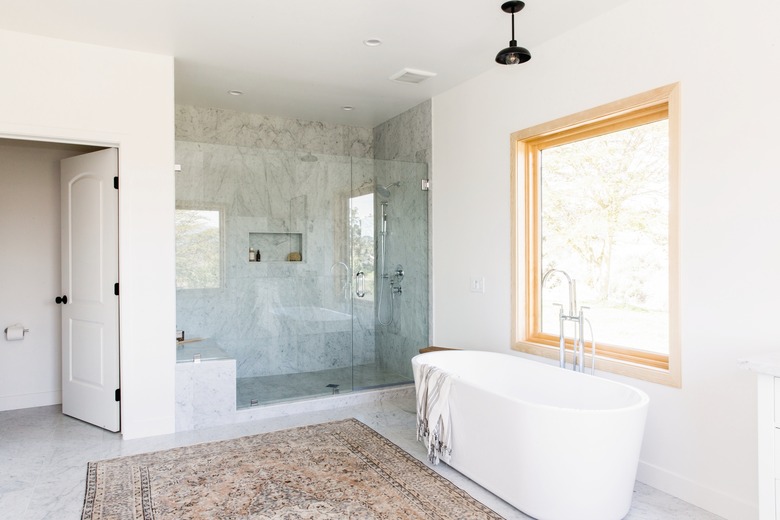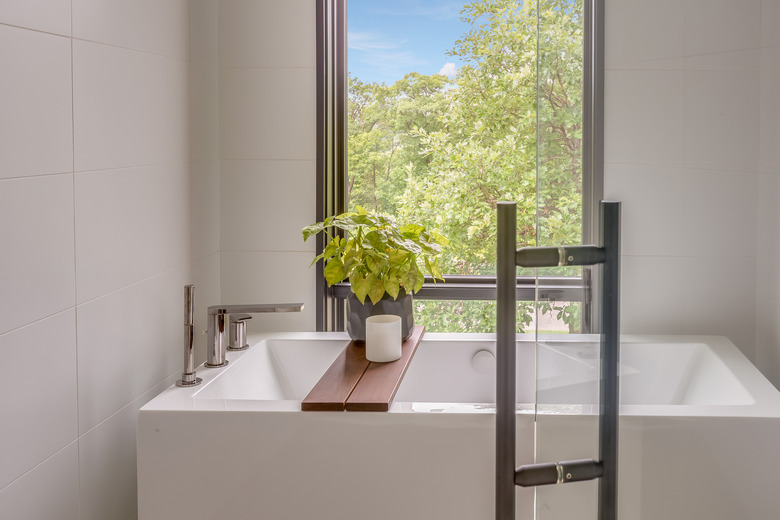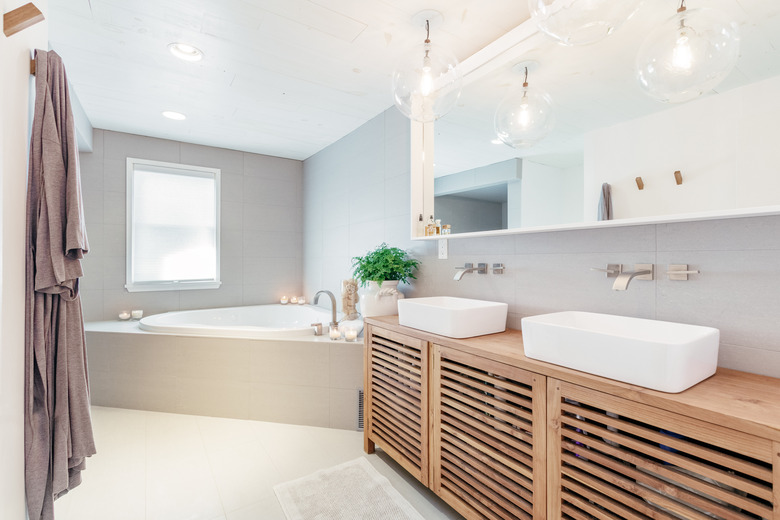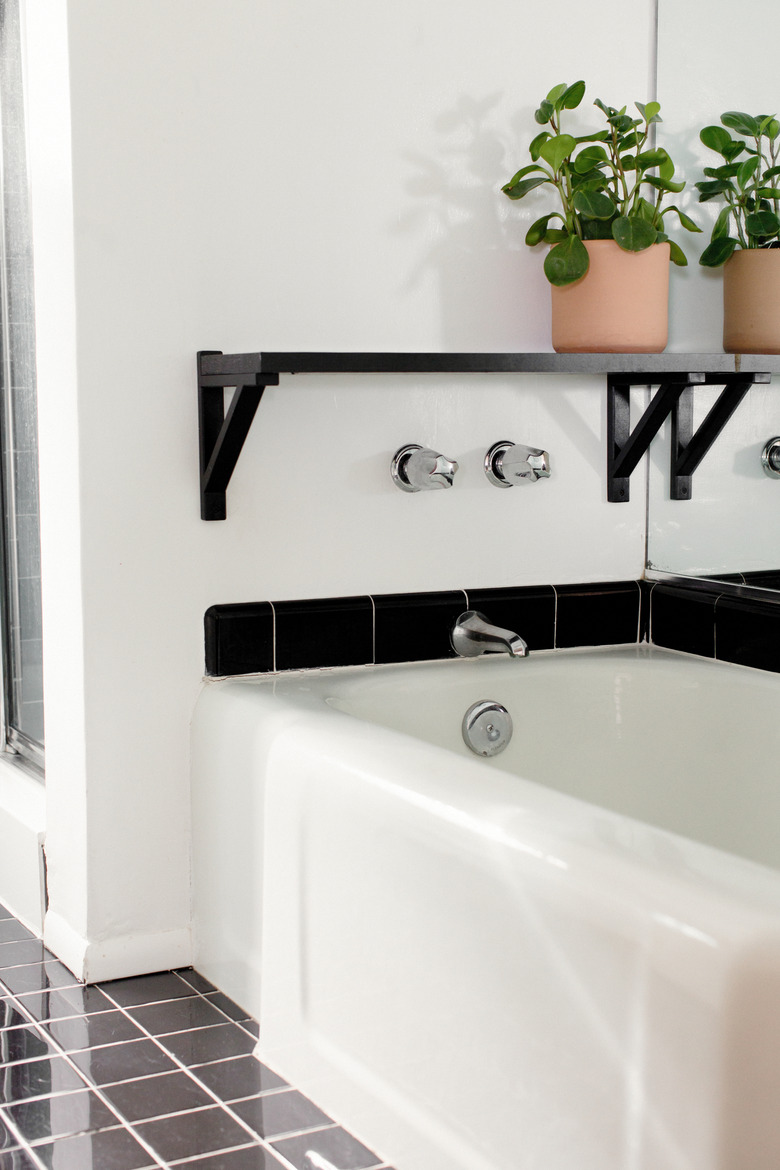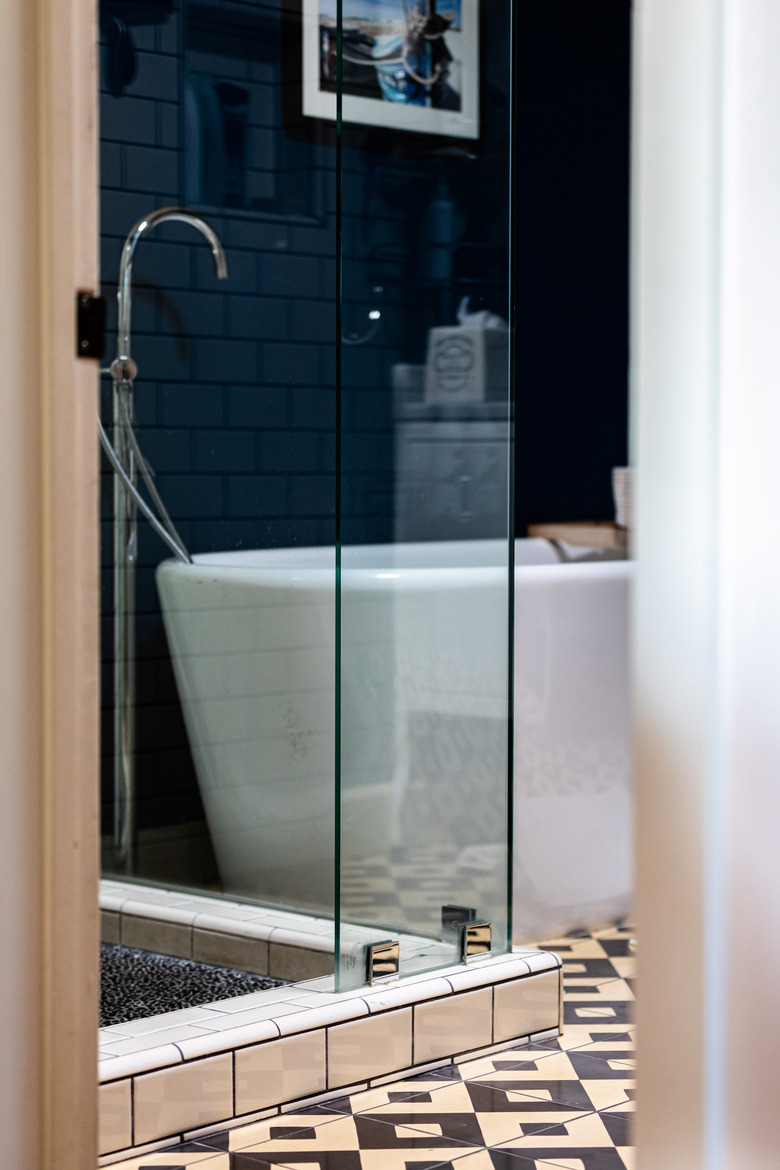A Homeowner's Guide To Tub Faucets
The ideal faucet for a bathtub isn't the same for every tub. As with sinks, some tubs already have faucet holes drilled in them, indicating the proper position and layout for the bath spout and handles. For a bathtub without faucet holes, you have a few more options for both the type of faucet and where to install it. Ultimately, though, the type of tub and its position in the bathroom dictate the best tub faucet for the room.
Deck-Mount Tub Faucets
A deck-mount tub faucet, sometimes called a rim-mount faucet, attaches through the rim or deck of the bathtub. These are used most often for tubs that have two faucet holes predrilled in the deck. Much like a sink faucet, the spacing of the holes determines which deck-mount faucets will fit the tub. The holes are measured from the center of one to the center of the other (such as 7 inches on center). The spout is attached to a bar on the handle assembly, so the entire assemblage is one unit spaced to fit specific faucet-hole measurements. Many deck-mount faucets have two handles, which may be levers or cross handles.
Installing a deck-mount faucet requires access from inside the tub surround or housing. Rigid supply lines connect to the water supply lines under the floor if they are accessible. If under-floor access isn't an option, use flexible supply lines to tap into in-wall plumbing in an adjacent wall, keeping the flexible lines concealed within the tub surround.
Roman Tub Faucets
A Roman tub faucet is similar to a deck-mount faucet, with a few minor differences. Roman tub faucets usually require three holes for installation on the horizontal top edge of a tub surround rather than on the rim of the actual tub. These are often used with jetted tubs or hot tubs, and since they mount to the tub surround, they can be positioned virtually anywhere along the surround's perimeter, including near a corner. When choosing an installation location for the spout, keep in mind that the end of the spout should reach far enough over the tub so all of the water lands in the tub.
The spout on a Roman tub faucet typically arches out over the tub. The angle varies; some look like tall kitchen faucet spouts, while others angle outward in a sleek "L" shape for a modern, minimal look. Numerous style options are available, so it's easy to match a Roman faucet to the general decor of the bathroom. Some Roman tub faucet kits also come with a hand sprayer assembly, which requires one or more additional holes for installation, according to Signature Hardware. If you're searching online for Roman faucets, note that many retailers list these as "deck-mount Roman faucets" even though they're a bit different than standard deck-mount faucets.
Installing a Roman faucet requires access through the tub platform or surround. The faucet connects to braided water lines under the tub housing and then to the water supply lines under the floor. If under-floor access is difficult, the faucet could connect to in-wall water supply lines as long as the tub is adjacent to a wall.
Wall-Mount Tub Faucets
Wall-mounted hardware in the bathing area isn't just for showers. Some bathtubs, such as alcove tubs, also use wall-mounted faucets provided that the tub doesn't have its own faucet holes. A wall-mounted faucet can be used with virtually any type of bathtub situated next to a wall. Before choosing a specific wall-mount faucet, measure the horizontal distance from the wall to the tub's nearest interior wall to ensure all the water from the faucet spout will clear the tub's inside wall. Since faucet spouts may vary in length or reach, it's important to find one that reaches far enough into the tub to prevent a mess outside the tub.
Wall-mount faucets require accessible water supply lines within the wall. In some cases, the water lines are easiest to access from a panel in an adjacent room behind the point of faucet installation. The faucet installation instructions should mention the ideal spout height above the rim of the tub — if it's too high, the water may splash a bit.
Wall-mount faucets come in a vast array of configurations, styles and handle types. Some are sold as a single piece with handles and spout on one base, while others require separate wall holes. Both single-handle and double-handle versions are available, with styles ranging from antique reproductions to incredibly sleek and modern pieces.
Faucets for the Tub Wall
If your bathtub already has faucet holes in it along a vertical inside tub wall, it's designed to pair with a tub-wall-mount faucet. As with a deck-mount faucet, the hole spacing must match this bathroom faucet's configuration. The standard spacing for a fairly current tub-wall-mount faucet is 3 3/8 inches on center, although this may not apply to every tub, especially an older one. The spacing on some older tubs may be as much as 8 3/4 inches on center, so it's important to measure the spacing on your tub before purchasing a faucet for it.
As with the two-hole deck-mount faucet, a tub-wall faucet has the spout between the handles, all as one unit. The type of tub spout and the general design on these vary from one to the next. Some have small spouts that are more about function than form, while more elaborate versions may have a tall, gooseneck-style spout.
Installing a tub-wall-mount faucet often requires access to plumbing from beneath the bathroom floor, which could mean quite a bit of work if the pipes are located elsewhere. Flexible water lines may be used in place of the standard rigid lines if connecting to in-wall plumbing is your best option, as may be the case with an alcove tub.
Freestanding Tub Faucets
A freestanding faucet, also known as a floor-mount or stand-alone faucet, is unique in the world of indoor faucets in that it stands tall and mounts to the floor and is completely visible outside the tub. These are used with tubs that do not have faucet holes, such as with many clawfoot tubs, pedestal tubs and freestanding soaking tubs.
Since there are no holes on the tub determining the faucet installation location, you're free to install the floor-mounted faucet anywhere you like provided that the faucet spout hangs far enough over the tub to pour water into it rather than onto the floor or the tub's rim. As with tub-wall-mount faucets, installing a freestanding faucet requires access to plumbing beneath the bathroom floor. For this faucet type in particular, in-floor plumbing is required to keep the water supply lines hidden.
